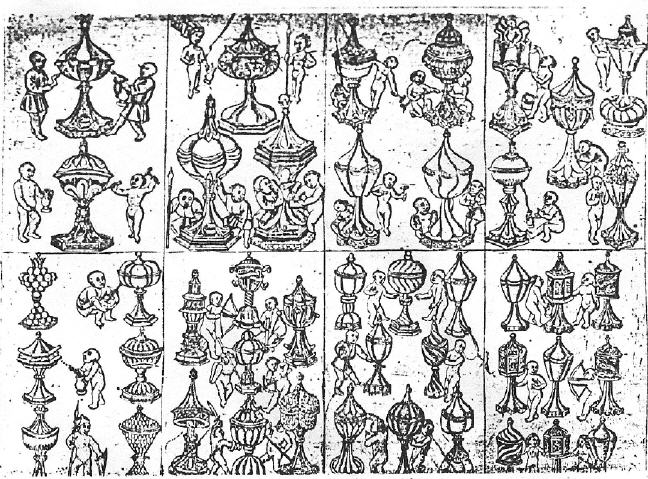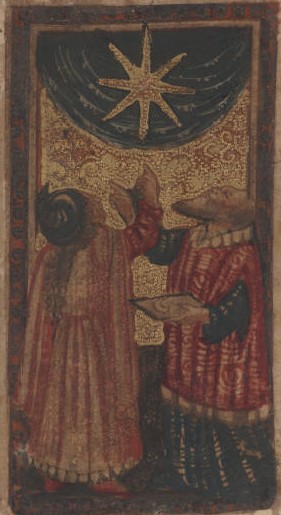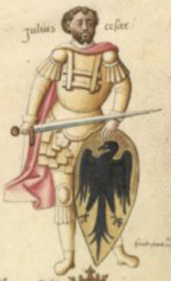" ... President Obama's speech to Congress last night might have emphasized urgency over historical accuracy when he stated, "And I believe the nation that invented the automobile cannot walk away from it." ..."
http://www.livescience.com/history/0902 ... gaffe.html
The case is specific and has its own conditions ... a lot of playing card rules or game features have wandered from one "name of a game" to another "name of a game". The relation of "Trionfi and Tarot" and "Germini and Minchiate" and "Karnöffel and Keyzerspiel" are just a few cases between many others. Your definition, that the "name and named object" appear at the same time is simply not appropriate to reality. "Mantegna Tarocchi" ... Mantegna was already gone and Tarocchi hadn't come, but it is a name of an object. And the object has a time of invention and the naming process could have another time.Ross G. R. Caldwell wrote: Yes, I said before, if I want a good historical place to invent the equal-papi rule, 1410 would be good, Constance would be good. But I am constrained by my dating - something that happened in 1978 should not be the reason something is invented in 2008.
Naturally ... there is a good chance, that a "new object" gets a "proper new name" at the same time, but it isn't a rule you can rely upon.
.. everything conservative ... ? And what we know of Mitelli?But Florence, whose woodcuts reached the same level at the same time, changes a lot. Their lists change a lot.You variously note, that Bologna stayed "traditional in their card motifs". But that is quite common for all decks, which had reached the "woodcut level" some time. We've about 170 fragments (Hoffmann told this number) of printed sheets in German decks 16th/17th century. The most show this "traditional behaviour". We've only few Tarocchi sheets in comparison. Some of these few are given to Bologna. It's natural, that we have the "result", that "traditional behaviour" is stronger observable in Bologna than elsewhere.
I only observe, that everything we know about Bologna is conservative. If you would like that what we don't know is not conservative, what can I say?
All I can ask is, why do think it is likely that Bologna had as many changes as Florence?
But Florence, whose woodcuts reached the same level at the same time, changes a lot. Their lists change a lot
The Minchiate is similar conservative in its observable process (as extant cards and in its own way) as Tarot de Marseille and its variants.
http://trionfi.com/i/01/
...see the list at the bottom to Minchiate at the "Deck" links, looking motif for motif. A lot of figures are rather stable.
What do you mean with "But Florence, whose woodcuts reached the same level at the same time .."
Which woodcut decks do you give to Florence? And when?
This is a mental typo ... replace "prohibition" with "production"I don't know what you mean about prohibition in 1477.
We've the specific note for 1477, that a larger commission for Trionfi card prohibition is given in Bologna ...
A "high tax" can have similar prohibitive function as a prohibition. Anyway ... the great gambling enemy were the dice games, whose users would need less culture and could sit on the streets to have their fun. This disturbed the public eye. People sitting at a table give a better picture, so less prohibitions for cards. And there was the general idea, that "people should work" ... and not indulge in games.Ah, yes, exactly. Without such activity, we wouldn't have notes at all. They are negative evidence - an activity was going on, and it got big enough to get noted because it caused problems or was a source of money. These are *exactly* the kinds of negative proofs that prove it was there....
Are these the news from a playing card producing city?
A tax is only worth making if it makes money - that means a lot of cards were being produced. San Bernardino's story is a legend, and you know these fervors had no lasting effect. Albergati could not have preached against gambling if it wasn't a big problem.
All of law is the same - laws aren't made against non-existent crimes.
For a card producing city like Nurremberg you've also occasional prohibitive tendencies, but they are drowned in the balancing notes, which relate to production. Bologna has for this time no good balance. Similar in the Florence region for this same time.
It took Nurremberg years to overcome the impact of St. Capristanus and becoming "normal" again. And San Bernardino's activities were visited by unbelievable masses of visitors ... if we can believe the propaganda.They had the trick to invoke and to deal with public hystery.







